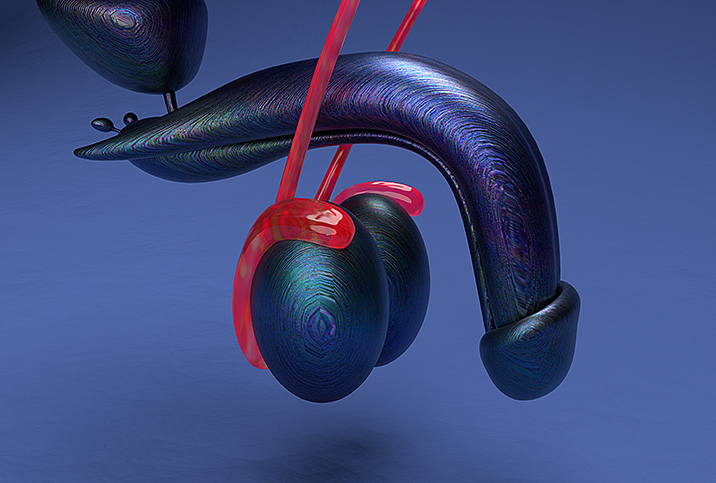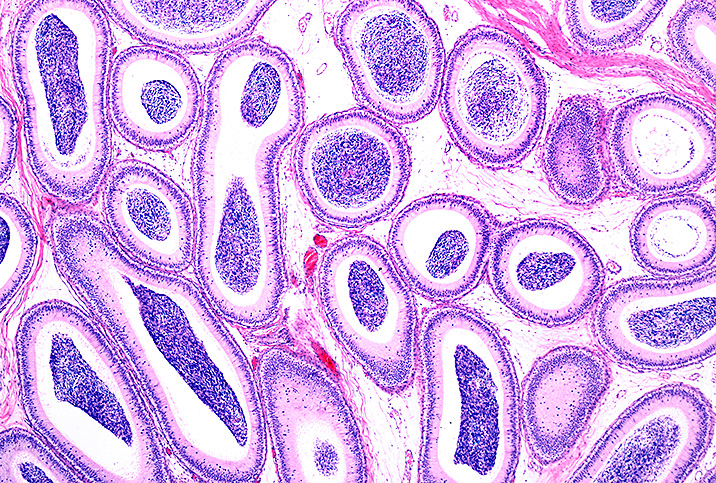Your Testicle Discomfort Could Be Epididymitis

Epididymitis is the painful swelling and inflammation of the epididymis—the long, coiled duct behind each testicle that stores and transports sperm. Epididymitis can be caused by a bacterial infection, which typically begins in either the urethra (the tube that runs through the penis) or the prostate (the walnut-sized gland that surrounds part of the urethra). The infection then spreads into the epididymis.
Sexually active men in their 20s and 30s are most commonly affected by epididymitis. However, it can afflict men of all ages. When you see a doctor for epididymitis, they will examine your testicles and take a urine sample. If the infection is bacterial, they will prescribe antibiotics. In addition to antibiotics, treatment commonly includes rest, over-the-counter pain relievers and an ice pack for the scrotum. Epididymitis typically does not result in permanent damage.
Symptoms of epididymitis
When a bacterial infection occurs, the epididymis becomes swollen, red, warm and painful. Epididymitis can cause pain in one or both testicles; however, it usually occurs in only one testicle. The infection can last up to six weeks if untreated.
Other signs and symptoms of epididymitis may include:
- Heaviness in the affected testicle
- The testicle is sensitive to touch
- The testicle is enlarged
- Pain in the abdomen or pelvis
- Frequent urge to urinate
- Painful urination
- Discharge from the penis
- Blood in the urine or semen
- Pain when ejaculating
- Fluid buildup around the testicle
- Fever
- Chills
- Nausea and vomiting
Symptoms typically depend on the cause of the epididymitis. For instance, discharge from the penis is likely to be due to a sexually transmitted infection (STI). The urge to urinate frequently may be caused by a urinary tract infection (UTI). Symptoms of epididymitis can be similar to those of testicular torsion, which is a medical emergency. Torsion occurs when the testicle twists around the spermatic cord and cuts off the blood supply to the testicle.
Causes of epididymitis
Common causes of epididymitis include:
- STIs: Chlamydia and gonorrhea are the most common STIs to cause epididymitis. These infections often cause an infection in the urethra that will sometimes travel down the vas deferens to the epididymis or testes.
- Other infections: Bacteria from a UTI could spread from the infected site to the epididymis. The bacterium E. coli can also cause epididymitis. Other potential infections include the mumps virus. In rare cases, tuberculosis can cause epididymitis.
- Urine in the epididymis: This condition happens when urine flows in the wrong direction into the epididymis, sometimes caused by heavy lifting.
- Trauma: A traumatic groin injury can cause epididymitis.
- Use of a catheter: A catheter is a tube that's inserted in the penis to drain the bladder, and its use can cause epididymitis.
Acute epididymitis is most often caused by an infection from bacteria—E. coli is a common cause—and is felt quickly. Chronic epididymitis, on the other hand, is characterized by more than six weeks of symptoms of discomfort or dull pain in the genital area. Chronic epididymitis can also occur without symptoms, and its cause is unknown.
Treatment for epididymitis
Men who have epididymitis can become very ill. They typically require bed rest, with support of the scrotum for comfort. Medications include over-the-counter pain relievers such as ibuprofen, aspirin and Tylenol.
Epididymitis caused by a bacterial infection must be treated with antibiotics. Doxycycline (brand names: Oracea and Monodox), levofloxacin (Levaquin) and ciprofloxacin (Cipro) are among the most commonly prescribed antibiotics for epididymitis, and are typically taken for one to two weeks.
If your doctor believes you have epididymitis, they might prescribe antibiotics for you before any lab test results are even back. You'll usually start feeling better in a matter of days after starting the antibiotics, but it's important to take the full course, even if you feel better. Swelling and soreness could last for weeks or months after taking the antibiotics.
If you have a severe infection—typically, if you are in severe pain, are vomiting or have a high fever—you might need to be hospitalized. Extremely severe cases may require the use of narcotics for a few days. Tuberculous epididymitis is serious, but extremely rare, and is treated with antituberculous drugs.
If you are suffering ongoing pain, seek medical care immediately. If you have severe pain in the scrotum or testes or you are running a fever, it's important you see your doctor. Epididymitis is a common condition that should not be a cause for concern as long as you get treatment for it, but only a doctor can discern your symptoms and make a diagnosis.


















